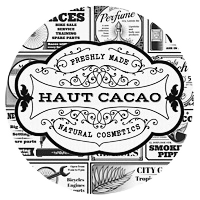Philip Wollen – Animals Should Be Off The Menu debate
What Does 100% Vegan Mean?
Adopting a vegan diet means saying “no” to cruelty to animals and environmental destruction and “yes” to compassion and good health. It also means paying attention to the ingredients in your food, cosmetics, and other products. The plant based alternatives were selected and used to formulate our products.
Animal Ingredients and Their Alternatives
PETA’s list of animal ingredients and their alternatives helps consumers avoid animal ingredients in food, cosmetics, and other products. Please note, however, that it is not all-inclusive. There are thousands of technical and patented names for ingredient variations. Furthermore, many ingredients known by one name can be of animal, vegetable, or synthetic origin. If you have a question regarding an ingredient in a product, call the manufacturer. Good sources of additional information are A Consumer’s Dictionary of Cosmetic Ingredients, A Consumer’s Dictionary of Food Additives, or an unabridged dictionary. All of these are available at most libraries.
Adding to the confusion over whether an ingredient is of animal origin is the fact that many companies have removed the word “animal” from their ingredient labels to avoid putting off consumers. For example, rather than use the term “hydrolyzed animal protein,” companies may use another term such as “hydrolyzed collagen.” Simple for them, but frustrating for the caring consumer.
Animal ingredients are used not because they are better than vegetable-derived or synthetic ingredients, but because they are generally cheaper. Today’s slaughterhouses must dispose of the byproducts of the slaughter of billions of animals every year and have found an easy and profitable solution in selling them to food and cosmetics manufacturers.
Animal ingredients come from every industry that uses animals: meat, fur, wool, dairy, egg, and fishing, as well as industries such as horse racing and rodeo, which send unwanted animals to slaughter. Contact PETA for our factsheets or check out PETA.org to learn more about the animals who suffer at the hands of these industries and what you can do to help these animals.
Rendering plants process the bodies of millions of tons of dead animals every year, transforming decaying flesh and bones into profitable animal ingredients. The primary source of rendered animals is slaughterhouses, which provide the “inedible” parts of all animals killed for food. The bodies of companion animals who are euthanized in animal shelters can wind up at rendering plants too.
Some animal ingredients do not wind up in the final product but are used in the manufacturing process. For example, in the production of some refined sugars, bone char is used to whiten the sugar; in some wines and beers, is in glass (from the swim bladders of fish) is used as a “clearing” agent. Gelatin, which comes from a pig can also be used, as well as milk products.
Relax a bit
If you’re new to this, don’t be surprised if your friends and family are at first put off by all the label-reading and ingredient-checking that you’re doing at restaurants and grocery stores. Explain your choices, but don’t run the risk of alienating would-be vegans by being overly fussy with waiters or debating someone over a small amount of one ingredient: It can make the decision to go vegan seem like a chore. Relax a bit. It’s probably not feasible for most people to completely eliminate all animal ingredients from their lives. Your goal as a vegan is to avoid animal ingredients whenever possible.

